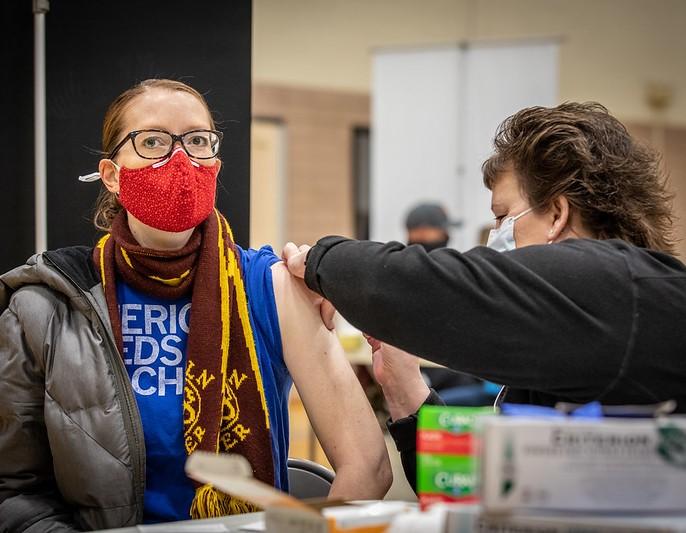Relative to the Pfizer/BioNTech COVID-19 vaccine, the Moderna version confers slightly more protection against infection—but not hospitalization, intensive care unit (ICU) admissions, or death—90 days after the second dose, suggests a modeling study of more than 3.5 million fully vaccinated Americans published today in Nature Communications.
Optum Labs scientists in Minnesota compared the effectiveness of the Moderna and Pfizer COVID-19 vaccines by analyzing healthcare claims from fully vaccinated Americans insured by a single US insurer (Medicare Advantage and commercial insurance). Among 8,848 infected participants, 35% had received the Moderna vaccine, and 65% had received Pfizer.
Follow-up was 14 to 151 days after the second vaccine dose. The researchers also analyzed data from those younger and older than 65 years who had never been infected.
Difference 'meaningful at the population level'
Relative to the Pfizer vaccine, Moderna was slightly more effective against COVID-19 infection starting shortly after the second dose and improved over time, with the need to vaccinate 1,047 people to prevent 1 infection at 30 days (aOR, 0.67; 95% CI, 0.63 to 0.71), decreasing to 290 at 90 days (aOR, 0.66; 95% CI, 0.60 to 0.73).
"Although this incremental risk is small at the individual level, it is meaningful at the population level," the study authors wrote. "Our results suggest that for every 1 million individuals vaccinated with the BNT162b [Pfizer] vaccine compared with the mRNA-1273 [Moderna] vaccine, this would represent 3,448 additional care-seeking cases of Covid-19 at 90 days."
The vaccines didn't differ in terms of protection against hospitalization, ICU admission, or death/transfer to hospice (aOR, 1.23; 95% confidence interval [CI], 0.67 to 2.25).
A time-to-event analysis showed similar results, including for infection (adjusted hazard ratio [aHR], 0.69; 95% CI, 0.66 to 0.72) and composite ICU admission or death/hospice (aHR, 0.76; 95% CI, 0.50 to 1.16) and composite hospitalization, ICU admission, or death/hospice (aHR, 0.67; 95% CI, 0.51 to 0.89). Risk differences between the vaccines for both infection and composite outcomes rose over time.
Stratified analyses were similar when including only never-infected patients, only those aged 65 and older, and only younger participants. "Since the population considered is different in each model, between-model comparisons are not valid, however, both models show directionally the same results," the researchers wrote.
Underlying conditions and severe outcomes
Among participants, congestive heart failure (aHR, 1.52; 95% CI, 1.03 to 2.26), high blood pressure (aHR, 2.17; 95% CI, 1.30 to 3.62), and lymphoma (aHR, 7.03; 95% CI, 4.31 to 11.47) increased the odds of composite hospitalization, ICU admission, or death/hospice.
This difference persisted even after adjusting for vaccine brand, sociodemographic factors, transfer from a nursing facility, vaccination timing, place of residence, and history of underlying illnesses.
The authors noted that circulation of the Delta SARS-CoV-2 variant in the United States was limited during the study period. "However, as new VOCs [variants of concern] emerge, each of these may have unique characteristics that would impact their ability to evade vaccine-induced immunity," they wrote. "Periodic updates to this analysis will allow us to track the comparative effectiveness of mRNA-1273 and BNT162B in the setting of the emergence of new VOCs, including Delta and Omicron."
The team cautioned that because they weren't able to count COVID-19 cases not recorded in medical claims or lab data, the findings likely overestimate both vaccines' effectiveness. Also, their data wouldn't have captured asymptomatic or mild infections for which participants didn't seek medical care, they said.





















